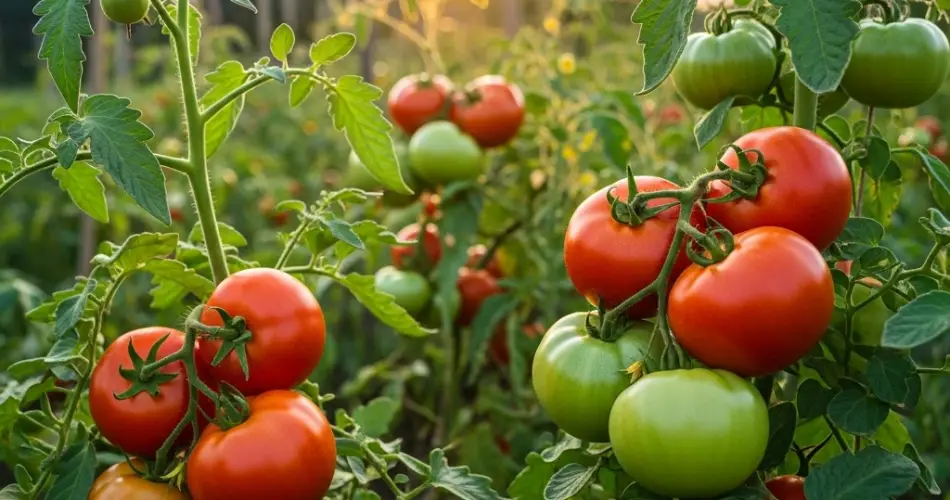Tomatoes are one of the most popular and rewarding crops for gardeners, and for good reason—they grow relatively easily, are incredibly versatile in the kitchen, and taste far better homegrown than store-bought. But for those who want to see results quickly and enjoy an earlier harvest, there’s a specific technique that can accelerate fruiting and maximize yield, even in a short growing season.
Many gardeners unknowingly delay their tomato plant’s productivity by overlooking this key step. Here’s what to do if you want your tomato plants to start bearing fruit as soon as possible—and keep them producing steadily.
The Secret? Pinch and Prune for Productivity
One of the fastest ways to stimulate early fruiting is by controlling how the plant grows. Tomato plants naturally want to grow tall and leafy, sending out many side shoots (called “suckers”) that don’t contribute directly to fruit production—at least not initially.
While a lush plant may look impressive, too much leaf growth means the plant is spending more energy on foliage rather than flowers and fruit. That’s where pruning and pinching come in.
Step 1: Identify the Suckers
Suckers are the small shoots that grow in the “V” between the main stem and a leaf branch. These will eventually develop into full branches with their own flowers, but early in the season, they mainly drain energy from the main plant.
-
If you’re growing indeterminate varieties (which keep growing and producing all season), removing suckers helps focus energy on early fruit.
-
For determinate varieties (which grow to a fixed size), sucker removal isn’t usually recommended because the plant already has a limited number of fruiting branches.
Step 2: Pinch Off Early Suckers
For quicker fruiting, start pinching suckers when the plant is about 30–40 cm (12–16 inches) tall. Use your fingers to gently snap off the suckers when they are still small (less than 7 cm or 3 inches long). This causes minimal stress and redirects the plant’s energy to flowering.
Continue this process regularly, especially in the first few weeks after transplanting. Don’t remove all the suckers—just those below the first flower cluster or in the densest parts of the plant.
Step 3: Remove Lower Leaves
Once the plant is flowering, remove the lower leaves, especially those that touch the soil or show any yellowing. This improves air circulation and reduces the risk of fungal diseases.
-
Prune carefully to avoid cutting too much at once.
-
Removing the lower 3–5 leaves can encourage the plant to send more energy to the fruit cluster instead of maintaining unnecessary foliage.
Step 4: Support and Train the Plant
Early fruiting depends not just on pruning but also on structure. A well-supported plant will spend less energy repairing damage and more on fruit.
-
Use a strong stake, trellis, or tomato cage to support your plant.
-
Tie the main stem gently with soft ties or string every 20–30 cm (8–12 inches) as it grows.
-
Keep training it vertically to ensure it gets plenty of sunlight and air.
Step 5: Water and Feed Properly
Tomato plants need the right nutrition to flower early and abundantly. After the plant starts forming flower buds, switch from a nitrogen-rich fertilizer to one that’s higher in phosphorus and potassium to promote flowering and fruiting.
-
Water deeply once or twice a week, depending on weather.
-
Avoid overwatering, which leads to root rot and delays fruiting.
-
Use mulch around the base of the plant to conserve moisture and regulate soil temperature.
Bonus: Use Early-Flowering Varieties
For gardeners who want the fastest possible harvest, select tomato varieties known for early maturity. Look for those labeled “early harvest” or with days-to-maturity of 50–60 days.
Some examples include:
-
‘Early Girl’
-
‘Stupice’
-
‘Bush Champion’
-
‘Siberian’
These varieties naturally produce fruit faster and are ideal for short growing seasons or impatient gardeners.
Final Thoughts
By simply pinching off early suckers, pruning excess leaves, and guiding your tomato plant’s energy toward flower and fruit production, you can enjoy juicy, ripe tomatoes much sooner than expected. This method doesn’t require expensive tools or complicated techniques—just consistent attention and a bit of gentle care.
Tomato plants have a remarkable ability to respond to strategic pruning. With the right balance of sunlight, nutrients, and structure, you’ll be rewarded not just with earlier fruit, but with healthier plants that continue to produce for months.
Try this technique, and you may be surprised just how quickly your tomato plants begin to bear fruit—and how much more productive they become throughout the season.



